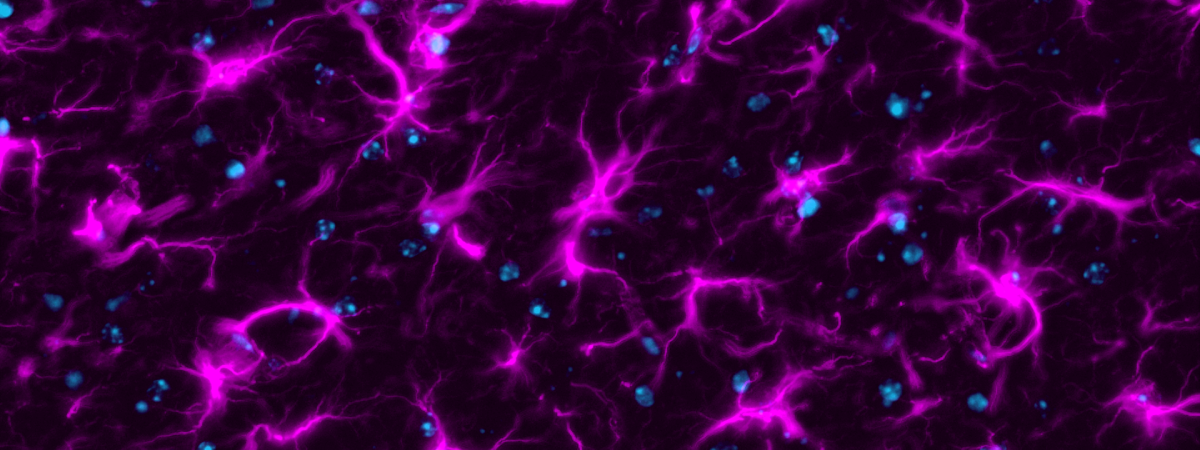Restoring the function of glial cells addresses a significant clinical need. The Institute for Glial Sciences at Case Western Reserve University aims to tackle critical questions such as: What drives glial cell dysfunction? How does this dysfunction contribute to various diseases? And can we repair damaged glial cells with innovative, glia-targeted therapies?
What are glial cells?
Glial cells, or glia, are non-neuronal cells in the nervous system that provide support and protection. They make up about 50% of the cells in the brain. Despite this staggering number, there is a lack of specialized focus They play several crucial roles, some are known and some are being discovered right here in the Institute! Known vital functions include:
- Support: They provide structural support to neurons.
- Nutrient supply: Glial cells help supply nutrients and oxygen to neurons and are linked to digestion.
- Myelination: Some glial cells, like oligodendrocytes in the central nervous system and Schwann cells in the peripheral nervous system, form myelin sheaths that insulate neuronal axons, improving signal transmission.
- Homeostasis: They help maintain the extracellular environment, regulating ion concentrations and clearing neurotransmitters.
- Immune defense: Microglia act as the primary immune cells in the brain, responding to injury and disease. There are several types of glial cells, including astrocytes, oligodendrocytes, microglia, enteric glia and ependymal cells, each with specific functions.
Overall, glial cells are essential for the proper functioning of the nervous system from your brain to your gut.
Why glial cells?
Glial cells play a crucial role in a wide array of neurological disorders, including:
- Neurodegenerative diseases: Multiple sclerosis, Alzheimer’s disease, amyotrophic lateral sclerosis (ALS), Huntington’s disease, and Parkinson’s disease.
- Pediatric genetic leukodystrophies: Pelizaeus-Merzbacher disease (PMD) and Vanishing White Matter disease (VWMD).
- Mental health conditions: Autism and schizophrenia.
- Trauma: Traumatic brain injury (TBI), hypoxia, and damage from environmental toxins.
- Peripheral nerve disorders: Charcot-Marie-Tooth disease (CMT), neuropathy, and chronic pain.
- Cancer: Colon, glioma, and schwannoma.
- Gastrointestinal disease influenced by enteric glia: Inflammatory bowel disease, irritable bowel disorder, and gastric motility defect.


